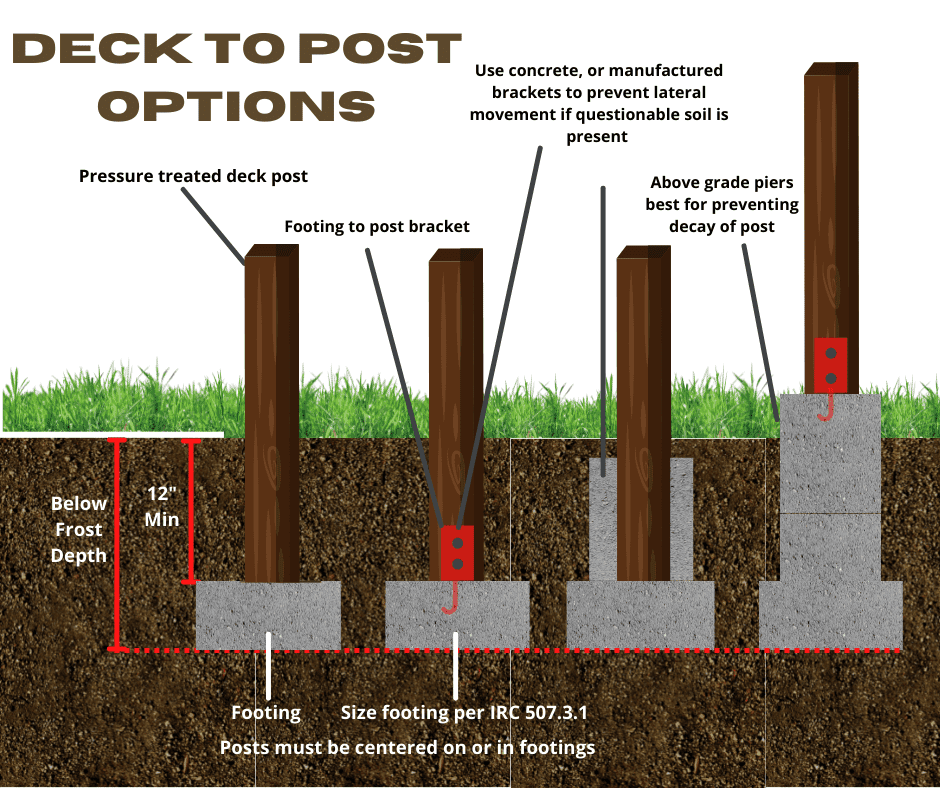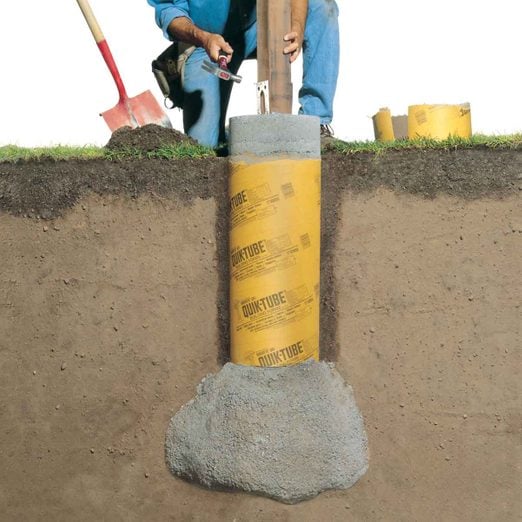Solid Ground, Strong Structure: The Basics of Deck Footings Setup
Boost Your Deck's Security With Proper Deck Footing: Guarantee Lasting Toughness and Safety And Security
When it concerns developing a deck, ensuring its stability and durability is of utmost value. One crucial variable that often gets overlooked is the proper installation of deck footings. These grounds work as the structure of your deck, giving the necessary assistance and security to hold up against the examination of time. By recognizing the influence of dirt conditions and choosing the best materials, you can enhance your deck's security and guarantee its resilient toughness and security. So, exactly how precisely do you go about achieving this? In this discussion, we will discover the relevance of correct deck footing, overview you with the step-by-step process of installment, and highlight the value of routine maintenance to maintain your deck's security.
Why Proper Deck Footing Matters
Correct deck ground is important for making sure the stability and lasting durability of any type of deck framework. The deck footing, or structure, offers as the anchor factor for the entire deck, supporting the weight of the structure and moving it to the ground listed below - Deck Footings. Without a solid ground, a deck can become unsteady, causing structural failure and possible safety and security risks

Furthermore, correct deck footing aids to shield versus dampness damage. Wetness can seep into the ground and weaken the foundation, resulting in decaying or decay. By using suitable products and strategies for the footing, such as helical stacks or concrete piers, the deck can be elevated in the air, lessening contact with moisture and lengthening its life expectancy.
Recognizing the Impact of Dirt Conditions
The stability and toughness of a deck structure can be significantly affected by the soil conditions in which it is built. Comprehending the impact of soil conditions is crucial for guaranteeing the long-lasting toughness and safety of a deck. Various kinds of soil have differing load-bearing abilities, drainage capacities, and expansion and tightening residential or commercial properties, which can all influence the stability of the deck.
One vital aspect to take into consideration is the soil's bearing ability, which describes its ability to sustain the weight of the deck and any extra lots. Soils with high bearing abilities, such as compressed gravel or clay, are suitable for supporting hefty structures like decks. On the various other hand, dirts with reduced bearing abilities, such as loosened sand or soft clay, might require added measures to enhance security, such as deep footings or dirt stablizing methods.

In addition, the soil's tendency to increase and get with adjustments in dampness web content can impact the stability of the deck. Soils with high clay content are prone to considerable expansion and tightening, which can result in resolving and changing of the deck framework. Correct measures, such as mounting moisture obstacles or using alternate structure systems, may be needed to minimize the effects of soil motion.
Picking the Right Ground Materials
What variables should be taken into consideration when picking the proper ground materials for a deck? Picking the appropriate footing materials is crucial for ensuring the stability and longevity of a deck. When making this decision., several variables require to be taken into consideration.
First of all, the kind of soil in the area plays an important function in determining the ideal ground materials. Different soils have differing load-bearing capabilities, so it is vital to pick materials that can appropriately sustain the weight of the deck and any kind of potential lots it may bear.
Second of all, the environment and climate condition of the region need to be considered. In areas with rough winter seasons or high degrees of wetness, footing products that are immune to deterioration and decay, such as treated or concrete timber, are advised. These products are more sturdy and less prone to damage from freezing temperatures, moisture, and parasites.
Moreover, the size and elevation of the deck likewise affect the option of footing products. Larger and taller decks need even more considerable grounds to guarantee stability and protect against changing or sinking. In such situations, materials like helical piers or concrete footings may be much more ideal.
Finally, budget factors to consider must not be overlooked. While some products may provide superior toughness and efficiency, they may also feature a greater cost. When choosing the appropriate ground materials for a deck., it is crucial to strike an equilibrium in between price and quality.
Step-by-Step Overview to Installing Deck Footings
When installing deck footings, it is necessary to adhere to a detailed guide to make certain stability and toughness. By following these actions, you can make certain that your deck will certainly be able to hold up against the examination of time and offer a safe and delightful exterior room for several years ahead.
The primary step in mounting deck footings is to determine the area and design of your deck. This consists of measuring and marking the location where the grounds will certainly be positioned. It is necessary to ensure that the grounds are uniformly spaced and lined up with the deck's style.
Next, you will need to dig the openings for the grounds. The depth and diameter click now of the holes will certainly rely on the size and weight of your deck. It is essential to dig the holes deep sufficient to get to listed below the frost line to protect against frost heave.
When the openings are dug, you can start putting the concrete grounds. It is recommended to make use of a pre-mixed concrete mix for this action. Fill up the holes with concrete, making sure that it is level and smooth. Use a post degree to guarantee that the footings are plumb.
After the grounds have been put, allow the concrete to treat for a minimum of 2 days prior to waging the deck setup. This will certainly make sure that the footings have hardened and prepare to sustain the weight of the deck.
Regular Maintenance to Maintain Deck Security
To keep the stability of your deck, regular maintenance is vital. By carrying out a regular upkeep schedule, you can guarantee that your deck continues to be risk-free, long lasting, and visually appealing. One essential element of upkeep is inspecting the deck for any kind of indications of damages or wear. This includes checking for broken or loosened boards, rusted nails or screws, and any kind of indicators of rot or degeneration. It is necessary to resolve these issues immediately to stop further damage and prospective security dangers.
Cleaning your deck routinely is one more crucial maintenance task. Furthermore, on a regular basis using a protective sealant can assist stop moisture damage and prolong Your Domain Name the life of your deck.
Along with these normal maintenance tasks, it is additionally a good idea to perform a complete assessment of the deck's architectural elements at the very least yearly. This includes checking the problem of the grounds, messages, joists, and beams. Any type of signs of deterioration or weak point must be dealt with promptly to make certain the ongoing stability and safety and security of the deck.
Verdict
In final thought, proper deck ground is vital for guaranteeing the long-lasting longevity and safety and security of your deck. Comprehending the impact of dirt conditions and picking the best ground materials are crucial actions in this process. By complying with a step-by-step overview to installing deck grounds and routinely keeping them, you can enhance your deck's security. Ultimately, these actions will aid preserve your deck's stability and ensure a risk-free and enjoyable outside room for many years ahead.
In this conversation, we will check out the value of correct deck footing, guide you through the step-by-step procedure of installment, and highlight the importance of routine upkeep to maintain your deck's security.
Proper deck footing is important for making sure the security and long-term sturdiness of any deck structure.One of the primary factors why proper deck ground matters is to protect against the deck from sinking or shifting over time (Deck Footings).In verdict, correct deck ground is important for making certain the durable resilience and safety and security of your view it deck. By adhering to a step-by-step guide to mounting deck footings and regularly keeping them, you can improve your deck's stability